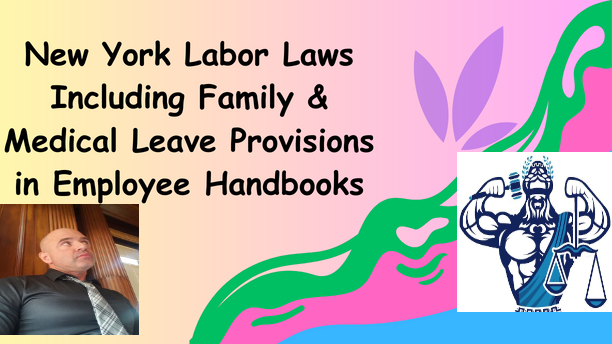Here at the Law Office of Vincent Miletti, Esq. and the home of the #UnusuallyMotivated movement, we take pride as a resilient and dependable legal services firm, providing such services in both a traditional and online, web-based environment. With mastered specialization in areas such as Employment and Labor Law, Intellectual Property (IP) (trademark, copyright, patent), Entertainment Law, and e-Commerce (Supply Chain, Distribution, Fulfillment, Standard Legal & Regulatory), we provide a range of legal services including, but not limited to traditional legal representation (litigation, mediation, arbitration, opinion letters, and advisory), non-litigated business legal representation and legal counsel, and unique, online legal services such as smart forms, mobile training, legal marketing, and development.
Still, here at Miletti Law®, we feel obligated to enlighten, educate, and create awareness about how these issues and many others affect our unusually motivated® readers and/or their businesses. Accordingly, to achieve this goal, we have committed ourselves to create authoritative, trustworthy, & distinctive content. Usually, this content is featured as videos posted on our YouTube Channel https://www.youtube.com/channel/UCtvUryqkkMAJLwrLu2BBt6w and blogs that are published on our website WWW.MILETTILAW.COM. With that, the ball is in your court and you have an effortless obligation to subscribe to the channel and sign up for the Newsletter on the website, which encompasses the best way to ensure that you stay in the loop and feel the positive impact of the knowledge bombs that we drop here!
As the authoritative force in Employment Law, it only seemed right to introduce one of the many upcoming series where we remain persistent in introducing a variety of topics, which will look to not only educate but also deliver in a sense that only Miletti Law® can. In this regard, this blog is Part III of our new miniseries on the “Fundamentals of Trademarks,” where a number of upcoming blogs will be dedicated to exploring trademarks in detail & depth. In Part II, we hammered on the five categories of the spectrum of distinctiveness in our blog titled “Trademark Protection Requirements; Spectrum of Distinctiveness” and mentioned that the level where a mark falls on the spectrum of distinctiveness determines its “strength” or level of distinctiveness. The categories we discussed include – fanciful, arbitrary, suggestive, descriptive, and generic.
Amidst our discussion, we hinted that the analysis of product packaging or what is known as “trade dress” is technically different in light of this spectrum of distinctiveness. Accordingly, we promised to hammer on Trade Dress (Product Packaging) in our next discussion. Because we are a firm of our word, this blog is titled “Trademark Law on Trade Dress (Product Packaging).”
So, let us get on with it.
Trademark Law on Trade Dress (Product Packaging)
Generally speaking, trade dress can be described as the commercial feel & look of a service or product that is used to distinguish and identify the source of that service or product. Product packaging and product designs are both considered trade dress. For example, Coca-Cola’s fluted bottle is a perfect example of a product packaging, while Stella D’Oro’s “S” shaped cookie is a perfect example of product design.
Under the trademark law, trade dress protection depends on whether it is (1) distinctive and (2) nonfunctional. Notably, a product feature will be considered functional and, subsequently, protectable under trade law if it affects the quality or cost of the product and/or is essential to the use or purpose of that product. In other instances where competitors would be put at a significant disadvantage unrelated to reputation following the exclusive use of such a feature, then the product feature will be considered functional. Whenever the issue of product configuration arises, the most probable question asked concerns “functionality.” Accordingly, courts may require differentiating between the component’s design and the component’s function. As courts have held in the past, if a device’s aspects had previously been the subject of an issued patent, then trademark protection will not be granted automatically.
One critical thing to note is that product packaging and product configuration are not treated the same under the trademark law where it concerns distinctiveness. On the one hand, this implies that in order to obtain trade dress protection, secondary meaning must be provided by owners since product configuration can never be inherently distinctive. On the other hand, if, for instance, a distinct unique visual image and a commercial impression are created by the combined elements of product packaging to consumers, product packaging may be inherently distinctive. Nonetheless, by showing that one’s trade dress has acquired secondary meaning, an owner may manage to obtain protection where packaging is not inherently distinctive.
In the next update of the content we have already published pertaining to trademarks, we shall switch gears and focus on “Limitations on Trademark Protection.” This subject concerns individual power to control how one’s mark is used. To hint, the major limitations include “acquiescence,” “laches,” “fair use defense,” and “first sale doctrine.” While each of these limitations will be discussed under individual blogs, we will start with the first in our blog and Part IV of the miniseries titled “Acquiescence – The First Limitation on Trademark Protection.”
Stay tuned for more legal guidance, training, and education. In the interim, if there are any questions or comments, please let us know at the Contact Us page!
Always rising above the bar,
Isaac T.,
Legal Writer & Author.
 Professional Legal & Business Services And Representation - English & Espanol!
Professional Legal & Business Services And Representation - English & Espanol!

 314-648-2586
314-648-2586 CALL US NOW
CALL US NOW








